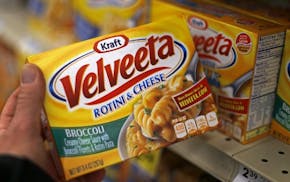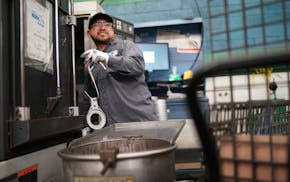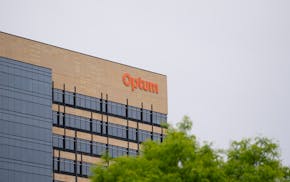General Mills is forgoing profit growth to boost promotions and other short-term price cuts over the next six months in an effort to revive customer loyalty for the long haul.
The Golden Valley-based maker of Bisquick and Bugles is responding to consumer pressure over consistently high food prices, especially among national brands. After years of pandemic-era price hikes to offset higher costs and maintain profit margins, General Mills is now forced to give some ground on profits to sell more food.
"Consumers look to us every day, and the better we serve them, the better off we are," CEO Jeff Harmening said in an interview Wednesday. "When we talk about value, it takes a lot of different forms — it's not just about price."
Discounts will be spread across product categories like refrigerated baked goods, Totino's Pizza Rolls and fruit snacks, company leaders said, joining marketing and manufacturing investments in brands like Pillsbury. In November, General Mills promotions were already 8% higher than the month before, according to Jefferies Research.
"I do believe that we put investment into the areas that our analytics show will provide the best return," said Dana McNabb, president of North American retail at General Mills. "We'll watch the response, and then we'll pivot as we learn more."
With the investment in price cuts and a 10% boost to ad spending, General Mills expects operating profits to drop 2% to 4% for the fiscal year that ends in May, down from a forecast range of 2% to flat.
Investors, rarely kind to diminished outlooks no matter the intention, responded by bringing the company's stock down 3% Wednesday morning.
But a monthly Purdue survey shows consumers expect food inflation of just 2.5% next year. That's the lowest expectation in the history of the survey, making clear food companies no longer have room to boost sales by raising prices.
"We continue to see a pressured consumer driving headwinds for many branded food categories, with ... higher levels of discounting as the latest concession to hesitant shoppers," wrote Piper Sandler analyst Michael Lavery.
Jefferies analyst Rob Dickerson wrote General Mills "continues to invest for growth but has experienced volume pressure in most of its top categories, including those that performed well during the pandemic." The company has prioritized selling more food — increasing volumes — to drive long-term growth.
"We feel great about the actions we're taking and the things we're doing to drive increased consumption," Harmening said.
That includes a Super Bowl ad for Totino's, the launch of high-protein Cheerios later this month and the recent acquisition of Tiki Pets to capitalize on fast growth in cat food.
"We don't just want to be good, we want to be remarkable," Harmening said, and that should show up in the product, packaging, price, advertising — all of it. "I love this remarkability framework, but I also love that we're delivering on that and in a variety of ways."
Chief Financial Officer Kofi Bruce said ongoing cost-saving measures should help offset inflation that the company will face over the coming year with a framework General Mills calls holistic margin management.
"That is always the first lever because that's what actually helps us deliver on some of the promises we make on remarkability," he said. "Flexibility for investment back in the product, and the messaging to the consumer, and to promotion and positioning on shelf — all those things are part of the mix."
The company has some momentum heading into the new year after a stronger-than-expected fall, driven in part by a return to growth for the Blue Buffalo pet food business.
For the second fiscal quarter that ended in November, the company easily beat Wall Street expectations with a $795.7 million profit, or $1.42 per share. Analysts were looking for $1.22 a share.
Profits rose 34% compared to last year while sales climbed 2% to $5.2 billion.

DOGE cuts federal money for upgrades at Velveeta plant in New Ulm

Minnesota factories strained by new steel tariffs and ensuing chaos
'We don't want to lose this mine': Fear sets in for Iron Range miners as shutdown takes hold

UnitedHealth sues the Guardian, alleging defamation in coverage of nursing home care

